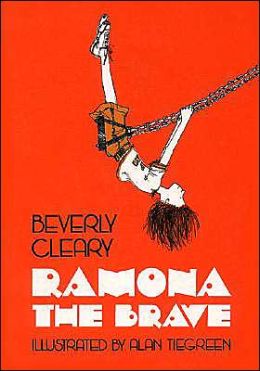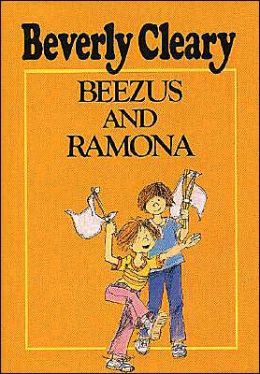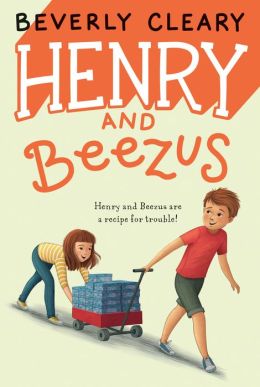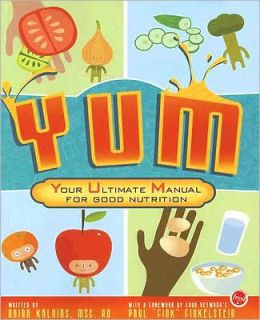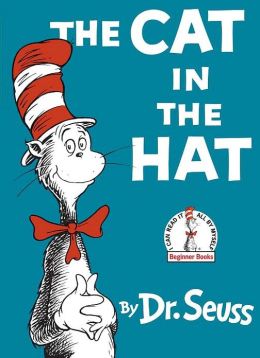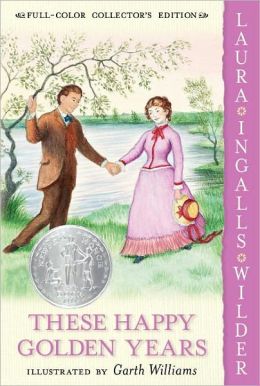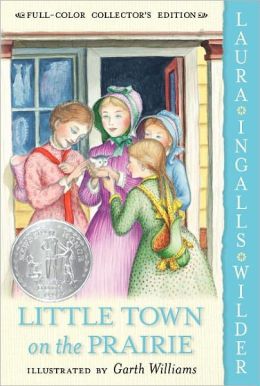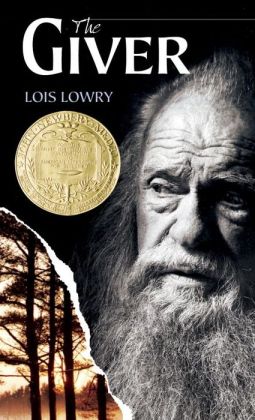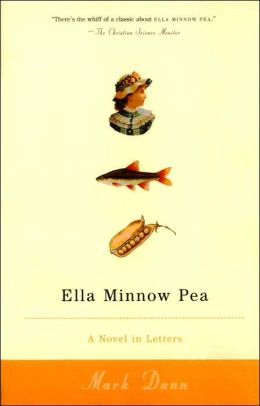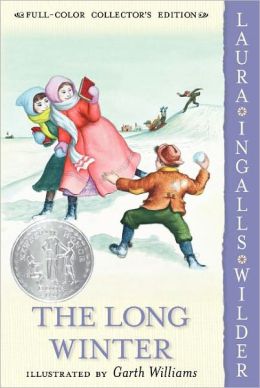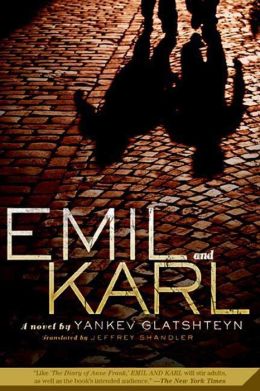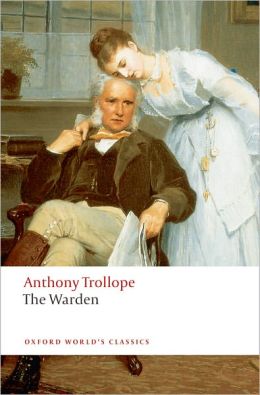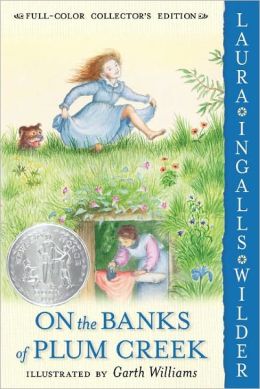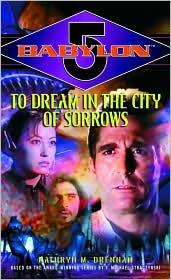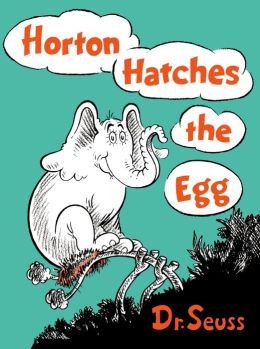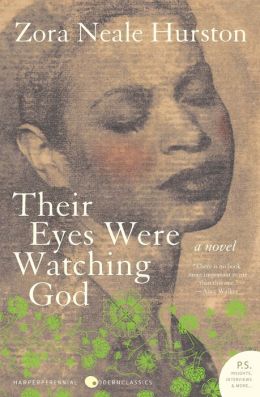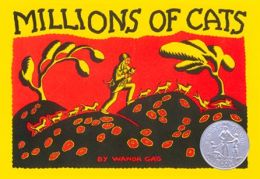new posts in all blogs
Viewing: Blog Posts Tagged with: books reread in 2015, Most Recent at Top [Help]
Results 51 - 75 of 78
How to use this Page
You are viewing the most recent posts tagged with the words: books reread in 2015 in the JacketFlap blog reader. What is a tag? Think of a tag as a keyword or category label. Tags can both help you find posts on JacketFlap.com as well as provide an easy way for you to "remember" and classify posts for later recall. Try adding a tag yourself by clicking "Add a tag" below a post's header. Scroll down through the list of Recent Posts in the left column and click on a post title that sounds interesting. You can view all posts from a specific blog by clicking the Blog name in the right column, or you can click a 'More Posts from this Blog' link in any individual post.
Yertle the Turtle and Other Stories. Dr. Seuss. 1958/2008. Random House. 96 pages. [Source: Review copy]
First sentence of Yertle the Turtle:
On the far-away island of Sala-ma-Sond, Yertle the Turtle was king of the pond. A nice little pond. It was clean. It was neat. The water was warm. There was plenty to eat. The turtles had everything turtles might need. And they were all happy. Quite happy indeed.
First sentence of Gertrude McFuzz:
There once was a girl-bird named Gertrude McFuzz and she had the smallest plain tail ever was. One droopy-droop feather. That's all she had. And, oh! That one feather made Gertrude so sad.
First sentence of The Big Brag:
The rabbit felt mighty important that day on top of the hill in the sun where he lay. He felt SO important up there on that hill that he started in bragging, as animals will and he boasted out loud, as he threw out his chest, 'Of all the beasts in the world, I'm the best! On land, and on sea...even up in the sky no animal lives who is better than I!'
Premise/plot of Yertle the Turtle: Yertle the Turtle is king, but, he doesn't want to rule supreme over a small pond, so, he starts turtle-stacking to expand his kingdom. After all he "rules" over everything he can see, so the higher the better, right?! But what happens when the turtles below him start to grumble and complain?!
Premise/plot of Gertrude McFuzz: Gertrude McFuzz is jealous and foolish. She wants MORE feathers, beautiful feathers so she can be the most beautiful bird. Her uncle doctor gives her some advice--reluctantly perhaps knowing that she will go too far with her vanity. She starts eating a berry to make her grow tail feathers, and, well, she should have been wiser. Will all end well?
Premise/plot of The Big Brag: A rabbit and bear get into a bragging contest until a worm intervenes.
My thoughts on Yertle the Turtle: I liked Yertle the Turtle. I did. I wouldn't say it's my favorite or best. But it is a good story on selfishness and tyranny. I'm glad the turtles started speaking up and gained their independence!
My thoughts on Gertrude McFuzz: I liked Gertrude McFuzz too. I thought the story was a great lesson in being careful what you wish for and being content with what you have!
My thoughts on The Big Brag: Of the three stories in this collection, this is probably my least favorite. The bear and the rabbit are quite annoying. Of course, that is the point. Bragging won't win you friends and will just make you look foolish.
Have you read Yertle the Turtle and Other Stories? What did you think of it? Of the three stories, which is your favorite?
If you'd like to join me in reading or rereading Dr. Seuss (chronologically) I'd love to have you join me! The next book I'll be reviewing is Happy Birthday to You.
© 2015 Becky Laney of
Becky's Book Reviews

By:
Becky Laney,
on 4/10/2015
Blog:
Becky's Book Reviews
(
Login to Add to MyJacketFlap)
JacketFlap tags:
1975,
library book,
MG Realistic Fiction,
books reviewed in 2015,
books reread in 2015,
series books,
J Fiction,
Beverly Cleary,
J Realistic Fiction,
children's classic,
MG Fiction,
Add a tag
Ramona the Brave. Beverly Cleary. 1975. HarperCollins. 208 pages. [Source: Library]
Ramona the Brave is the third book in the series. I love it. It has some GREAT moments.
"Trouble in the Park" Ramona can't understand why Beezus is angry with HER for standing up to the big, bad bullies at the park who were teasing her (Beezus). Ramona thought that she was loving her sister by speaking up, but, Beezus is too angry to explain. Readers also learn that Ramona and Howie LOVE to play BRICK FACTORY.
"Mrs. Quimby's Secret" Ramona and Beezus learn that they won't have to share a room together anymore. Their parents have decided to add a room to the house. Mrs. Quimby will WORK OUTSIDE THE HOME to help pay for it.
"The Hole in the House" This chapter has a perfect description of Brick Factory.
They were no longer six-year-olds. They were the strongest people in the world. They were giants. When the driveway was thick with red dust, Ramona dragged out the hose and pretended that a terrible flood was washing away the Brick Factory in a stream of red mud. "Run, Howie! Run before it gets you!" screamed Ramona. She was mighty Ramona, brave and strong. Howie's sneakers left red footprints, but he did not really run away. He only ran to the next driveway and back. Then the two began the game all over again.(38)
"The First Day of School" Ramona doesn't have the best first day experience. She wanted to love first grade as much as kindergarten. (Not that she always loved, loved kindergarten, mind you). She wanted to love her first grade teacher, Mrs. Griggs, as much as the wonderful Miss Binney. It doesn't happen. Sometimes teachers are like that, even Beezus can tell you that. Beezus LOVES her teacher. (Ramona ends up liking him too.)
"Owl Trouble" Poor Ramona! Susan and Ramona have ISSUES over their owls at art time. I feel for Ramona in this situation.
"Parents' Night" The owl-drama continues. And Ramona writes the sweetest heart-felt note to her mom. COME HERE MOTHER. COME HERE TO ME. This chapter is just one reason why I love, love, love Cleary's writing. She KNOWS what it feels like to be a kid.
"Alone in the Dark" Ramona doesn't like her new room. She finds it VERY SCARY. Poor Ramona is FRUSTRATED during the day at school, not liking her teacher and some of her classmates, and she's SCARED to be alone in her room at night. So she's not sleeping all that great either. I believe she mentions how as long as she hears her Dad moving about and knows that he's awake somewhere, it's not too bad, but, then when everyone is asleep but her, it's overwhelming.
"Ramona Says A Bad Word" I LOVE, LOVE, LOVE, LOVE, LOVE this chapter. I do. Ramona's had a horrible time of it throughout the whole book, and, she's had enough of it. She breaks down. She lets loose. GUTS. GUTS. GUTS. GUTS. But why is everyone laughing at her?! She wasn't trying to be funny! She was doing some serious venting!!!
Then Ramona felt her mother's hand on her back. "Ramona," she said gently, "what are we going to do with you?" With red eyes, a swollen face, and a streaming nose, Ramona sat up and glared at her mother. "Love me!" Her voice was fierce with hurt. Shocked at her own words, she buried her face in the pillow. She had no tears left. "Dear heart," said Mrs. Quimby. "We do love you." Ramona sat up and faced her mother, who looked tired, as if she had been through many scenes with Ramona and knew many more lay ahead. "You do not. You love Beezus." There. She had said it right out loud. For years she had wanted to tell her parents how she felt. (140-1)
"Mr. Quimby's Spunky Gal" Ramona encounters a big, bad dog, loses a shoe, and gains a new friend. Ramona makes her own slipper--with a borrowed stapler from Beezus' teacher--and finally feels a little bit brave.
Do you have a favorite cover?
© 2015 Becky Laney of Becky's Book Reviews

By:
Becky Laney,
on 4/9/2015
Blog:
Becky's Book Reviews
(
Login to Add to MyJacketFlap)
JacketFlap tags:
series books,
J Fiction,
Beverly Cleary,
J Realistic Fiction,
children's classic,
MG Fiction,
library book,
MG Realistic Fiction,
books reviewed in 2015,
books reread in 2015,
Add a tag
Ramona the Pest. Beverly Cleary. 1968. HarperCollins. 208 pages. [Source: Library]
Ramona the Pest is the first book in the series from Ramona's own point of view. At last readers get the chance to be inside Ramona's head after witnessing all her pesty ways in previous books. Ramona is in kindergarten. And Ramona's teacher isn't the only one who will find her unforgettable. In my review of Beezus and Ramona, I mentioned how Cleary greatest strength was her ability to capture what it was like to be a kid. That is very true in Ramona the Pest. The writing is PERFECT. Ramona could not understand why grown-ups always talked about how quickly children grew up. Ramona thought growing up was the slowest thing there was, slower even than waiting for Christmas to come. She had been waiting years just to get to kindergarten, and the last half-hour was the slowest part of all.(7)
"Ramona's Great Day" Ramona's first day of morning kindergarten. Her teacher is Miss Binney. The days has its ups and downs. But Ramona by the end of the day feels good about this thing called school. But will it last?! This is the chapter where Ramona asks Miss Binney HOW DID MIKE MULLIGAN GO TO THE BATHROOM?!
"Boys and girls," she began, and spoke in her clear, distinct way. "The reason the book does not tell us how Mike Mulligan went to the bathroom is that it is not an important part of the story. The story is about digging the basement of the town hall, and that is what the book tells us." Miss Binney spoke as if this explanation ended the matter, but the kindergarten was not convinced. Ramona knew and the rest of the class knew that knowing how to go to the bathroom was important. They were surprised that Miss Binney did not understand, because she had shown them the bathroom the very first thing. Ramona could see there were some things she was not going to learn in school, and along with the rest of the class she stared reproachfully at Miss Binney. (20)
"Show and Tell" Howie and Ramona get into a fight over a ribbon. That's the short version. It's a ribbon that Miss Binney gave Howie for "Howie's bunny" that was really Ramona's bunny. You see, Howie's mom thought Howie was upset that he wasn't bringing anything for show and tell. And Ramona's mother made her go in the house to get something--anything--for Howie to take. She picked a rabbit that was mainly loved by their cat. Ramona thinks it should be HER ribbon because it was tied to her bunny. Howie likes it only because it came from the teacher. That and I think he likes to fight with Ramona. So if she didn't want it, would he?!
"Seatwork" Adventures and misadventures in the classroom. We get lovely descriptions of some of Ramona's classmates. There is Howie, of course, Davy, the boy she chases and tries to kiss, and Susan, her nemesis. This chapter, Ramona decides to go by Ramona Q and decorate the Q like a cat. I love this chapter because we get to overhear Miss Binney interacting with ALL the children.
"Substitute" Ramona is scared of the substitute teacher and doesn't want to be in kindergarten if Miss Binney is absent. She can't go home, or, her mother will know. So where will she go?!
"Ramona's Engagement Ring" This chapter is probably one of my FAVORITE chapters from the whole series. In this chapter, Ramona has issues with her boots. She doesn't want hand-me-down brown "boy" boots. She wants pretty RED boots that are obvious girl boots. She does get them eventually. But can she use them responsibly?! This is the chapter where Henry Huggins becomes Ramona's hero...much to Davy's relief. It has Ramona joyfully shouting that she WILL MARRY HENRY HUGGINS. She has a worm engagement ring and everything.
"The Baddest Witch in the World" The Halloween chapter. Ramona *wants* to be the baddest witch, but, she also wants to be herself. She doesn't want to be unknown. So what will she do when it's costume time?!
"The Day Things Went Wrong" Will Ramona be kicked out of kindergarten because she lacks self-control when it comes to touching or pulling Susan's curly hair?! This one has plenty of drama, including a lost tooth which she leaves at school accidentally.
"Kindergarten Dropout" Ramona still persists that she won't go back to school. Is there anything to be done?! Ramona despaired. Nobody understood. She wanted to behave herself. Except when banging her heels on the bedroom wall, she had always wanted to behave herself. Why couldn't people understood how she felt? She had only touched Susan's hair in the first place because it was so beautiful, and the last time--well, Susan had been so bossy she deserved to have her hair pulled. (202)
It was a joy to read Ramona the Pest again. Do you have a favorite cover? © 2015 Becky Laney of
Becky's Book Reviews

By:
Becky Laney,
on 4/4/2015
Blog:
Becky's Book Reviews
(
Login to Add to MyJacketFlap)
JacketFlap tags:
HarperCollins,
series books,
J Fiction,
Beverly Cleary,
J Realistic Fiction,
children's classic,
MG Fiction,
library book,
1955,
MG Realistic Fiction,
books reviewed in 2015,
books reread in 2015,
Add a tag
Beezus and Ramona. Beverly Cleary. 1955. HarperCollins. 208 pages. [Source: Library]
Unlike other books in the Ramona series, this one is narrated by Beezus. Like all other books in the Ramona series, it has a just-right feel about it. Beverly Cleary's greatest talent may be in her capturing what it feels like to be a kid.
Beezus, as you probably know, is Ramona's big sister. Ramona does steal the show in almost every book in which she appears. There's something unforgettable about her. But though the focus is on Ramona, this is still very much Beezus' book. It captures how she feels about her family, about Ramona.
"Beezus and Her Little Sister." Ramona LOVES, LOVES, LOVES to have The Littlest Steam Shovel read to her. Her parents are unwilling to read it to her--they have come to have no tolerance for it. But Beezus, well, she'll read it to Ramona, not that she likes it, but, she'll give in now and then. She gets the idea to take Ramona to the library to get a brand new book--for two weeks. Ramona picks a new book, but, it is still about steam shovels. She likes it so much, that she does something NAUGHTY so she can keep it for always. What will Beezus do since it was checked out on her card? Just how sympathetic will the librarian be?
"Beezus and Her Imagination" Beezus is in an art class. Ramona isn't supposed to be in the class with her, she's supposed to be playing outside in the sandbox. But on this occasion, Beezus finds Ramona in class with her. Could she get inspired by her sister's imaginary pet?! Could she earn her teacher's attention?!
"Ramona and Ribsy" Beezus invites Henry Huggins (and his dog, Ribsy) to her house to play checkers. It doesn't go well. Both Ribsy and Ramona have fits of sorts. And Ribsy ends up locked in the bathroom?! Beezus wishes Ramona was more like other people's sisters.
"Ramona and the Apples" Beezus is supposed to be watching Ramona while their mother does the grocery shopping. But. Ramona proves too much to handle. She sneaks into the basement and has her way with all the apples...taking one bite and just one bite from each apple. Will Beezus get in trouble? Can anything good come from all those ruined apples?
"A Party at the Quimbys" Ramona decides to have a party and invite other kids over to the house--without permission of course. What will Beezus and their mother do? This one ends in a parade. Among the guests, Howie and Willa Jean.
"Beezus's Birthday" Will Beezus have a cake for her tenth birthday?! It might not be as easy as you might think. Not with Ramona around. But with a little help from Aunt Beatrice, all might be well after all. Hint: If you have a sister like Ramona, don't read the story of Hansel and Gretel to her when your cake is in the oven!
I love the Ramona series. I do. I love, love, love the Ramona books. I think I read them dozens of more times than the Little House books. (I've recently reread these too.) I'm not sure Beezus and Ramona is my favorite of the series, but, it's a great start to a great series.
Do you have a favorite cover?
© 2015 Becky Laney of
Becky's Book Reviews
The Cat In the Hat Comes Back. Dr. Seuss. 1958. Random House. 63 pages. [Source: Library]
First sentence:
This was no time for play.
This was no time for fun.
This was no time for games.
There was work to be done.
All that deep,
deep, deep snow,
All that snow had to go.
When our mother went
Down to the town for the day,
She said, "Somebody has to
Clean all this away.
Somebody, SOMEBODY
has to, you see."
Then she picked out two Somebodies.
Sally and me.
Premise/plot: It's a sequel to The Cat in the Hat. The two children have learned a lesson or two since the previous book. Do they invite him in? Do they take joy in his arrival? Hardly!!! They are anxious to be rid of him. While they're HARD at work shoveling snow, the cat arrives and enters their house. They don't want him IN the house, they're afraid of what he might do. But despite their good intentions, they might be a little too late. For the Cat in the Hat takes a bath in their tub--while eating cake--and when the water is drained, they notice something awful: A BIG, LONG PINK CAT RING! How will they get rid of this mess that looks like PINK INK?! They know--though the cat obviously doesn't--that it shouldn't involve ANYTHING that belongs to their mother or father. From cover to cover, this one just SATISFIES.
My thoughts: The Cat in the Hat is probably my favorite and best book by Dr. Seuss. I LOVE, LOVE, LOVE it. It's just so enjoyable, so satisfying, so funny. And it's also so very quotable!!!
Have you read The Cat in the Hat Comes Back? Did you like it? love it? hate it? I'd love to know what you think of it! Also, how do you think it compares to The Cat in the Hat? Which of the two is your favorite?
If you'd like to join me in reading or rereading Dr. Seuss (chronologically) I'd love to have you join me! The next book I'll be reviewing is Yertle the Turtle and Other Stories.
© 2015 Becky Laney of
Becky's Book Reviews

By:
Becky Laney,
on 4/3/2015
Blog:
Becky's Book Reviews
(
Login to Add to MyJacketFlap)
JacketFlap tags:
Beverly Cleary,
J Realistic Fiction,
1952,
MG Fiction,
library book,
MG Realistic Fiction,
books reviewed in 2015,
books reread in 2015,
J Fiction,
Add a tag
Henry and Beezus. Beverly Cleary. 1952. HarperCollins. 224 pages. [Source: Library]
I definitely enjoyed rereading Henry and Beezus. Unlike the Ramona series, I've only read the Henry Huggins books once or twice. Henry Huggins, our hero, really, really wants a bicycle. His parents can't afford to give him one, and, he doesn't expect it of them. He doesn't feel entitled to it. If only there was a way to earn enough money to buy it himself.
"Henry and The Roast." Readers meet Henry and Ribsy, learn of his great desire for a bicycle, and witness Ribsy steal a roast from the neighbor's barbecue. Readers also meet Henry's nemesis: Scooter, a boy with a bicycle and a paper route. A boy who happens along just in time to "save the day" or save the roast and save Ribsy from a dog fight.
"Henry Gets Rich." Henry discovers abandoned boxes of gumballs. He needs Beezus' red wagon to carry them back home. But borrowing the wagon means getting Beezus and Ramona to tag along with him.
"Ramona," coaxed Beezus, "can't you play that game some other time?"
"What game?" asked Henry. He couldn't see that Ramona was playing any game.
"She's playing she's waiting for a bus," explained Beezus.
Henry groaned. It was the dumbest game he had ever heard of. "Doesn't she know it isn't any fun just to sit on a box?" he asked, looking nervously up and down the street. If only he could be sure no one else had discovered his gum!
"Sh-h," whispered Beezus. "She thinks it's fun and I don't want her to find out it isn't. It keeps her quiet." Then she said to her little sister, "If you get in the wagon, Henry and I'll pull you and you can pretend you're riding on the bus." (40)
Henry thinks the gum a great discovery. He can even sell it to all his friends and classmates. He can make some money for his bike fund. But the teachers aren't happy about all the gum. (Neither are the janitors). And he finds it increasingly hard to sell gum after the first day or two. Maybe the gum wasn't such a wonderful discovery after all.
"The Untraining of Ribsy" Henry has the opportunity to take over Scooter's paper route for a week. A dollar will help his bike fund that's for sure. But can he stop Ribsy from "stealing" papers on the route? Beezus and Ramona make an appearance in this chapter as well. In fact, it is Ramona who accidentally provides a solution.
"Henry Parks His Dog" and "Beezus Makes A Bid" Henry, Beezus, and Ramona go to a police auction. Henry's trying to buy a bicycle at the auction with his $4.04. (He had to spend a dime to buy Ramona a snack. He didn't want to stop at the store and "park his dog" outside, but, he had to do something to get Ramona to behave.) Will he get a good deal? Or will all the kids tease him?
"The Boy Who Ate Dog Food" Everyone is excited about the grand opening of Colossal Market. There will be prizes and free samples. Henry and his parents go. As do Beezus and her family, I believe. (I think all the neighbors go.) Henry is lucky and unlucky. He wins something. But the prize, at first, feels very unlucky. He won $50 of work at a BEAUTY SALON. He doesn't need manicures, waves, and facials. Everyone is laughing. Which leads him to accept a dare to eat dog food. But then he realizes that he can SELL his prize and get the money for what he wants most...
© 2015 Becky Laney of
Becky's Book Reviews
YUM: Your Ultimate Manual for Good Nutrition. Daina Kalnins. 2008. Lobster Press. 192 pages. [Source: Review copy]
YUM is an informative nonfiction read for upper elementary and middle grade students. Its focus is on teaching young people the basics of nutrition, on how to be more aware of what they're putting in their bodies. It is not a diet book, a
how to lose weight book. If nothing else, the book will teach readers HOW to read food labels and basic definitions of key terms.
In the first chapter, the focus is on macronutrients: carbohydrates, fats, and protein. In the second chapter, the focus is on micronutrients: Vitamin A, Vitamin B, Vitamin C, Vitamin D, Vitamin E, Vitamin K, Calcium, Iron, Zinc, Potassium, and Sodium. In the third chapter, the focus is on how the body digests food. In the fourth chapter, the author provides sample menus and recipes for breakfast, lunch, supper, and morning and afternoon snacks. In the fifth chapter, the practical advice continues on how to make changes and establish good habits. This last chapter covers a little bit of everything: food safety (how long to keep food, how to tell if food has gone bad, etc), grocery shopping, eating out, etc.
The book is written for kids and with kids in mind. The advice is specifically for what growing, active children need to be eating to be healthy.
Nutrition books can become dated quickly, this one isn't as up-to-date as I'd like. But it still has some good, basic information. One thing that makes it continue to be relevant is how reader-friendly it is.
My favorite chapter is probably the one on micronutrients. I loved learning what each nutrient does in the body, and which foods you should eat to get that nutrient.
© 2015 Becky Laney of
Becky's Book Reviews
The Cat In the Hat. Dr. Seuss. 1957. Random House. 61 pages. [Source: Library]
First sentence:
The sun did not shine. It was too wet to play. So we sat in the house all that cold, cold wet day.
Premise/Plot: Sally and her brother can't find ANYTHING fun to do on a rainy day until a strange cat comes to their house, invites himself in, and turns everything topsy-turvy. This rhyming book also stars a fish, who knows that the Cat in the Hat's fun only leads to trouble, and Thing One and Thing Two. (One of the games they play is up-up-up with a fish. Another is fun-in-a-box.)
My thoughts: I've read this one dozens of times. It's so familiar, so fun. It's hard for me to imagine what it would be like to read it for the first time. I've also heard the audio book read by Kelsey Grammer. Is this my FAVORITE Seuss book? I'm not sure that it is. But it's so fun and silly.
Have you read The Cat in the Hat? Did you like it? love it? hate it? I'd love to know what you think of it!
If you'd like to join me in reading or reading Dr. Seuss' picture books (chronologically) I'd love to have you join me! The next book I'll be reviewing is The Cat in the Hat Comes Back.
© 2015 Becky Laney of
Becky's Book Reviews

By:
Becky Laney,
on 3/27/2015
Blog:
Becky's Book Reviews
(
Login to Add to MyJacketFlap)
JacketFlap tags:
Laura Ingalls Wilder,
series books,
J Fiction,
Newbery Honor,
1943,
children's classic,
MG Fiction,
mg historical,
j historical,
books reviewed in 2015,
books reread in 2015,
Add a tag
These Happy Golden Years. Laura Ingalls Wilder. Illustrated by Garth Williams. 1943. HarperCollins. 289 pages. [Source: Library]
Why is it that reading These Happy Golden Years makes me giddy? Could it be my actual favorite of the series after all? Perhaps. It has been such a treat for me to reread these Little House books this past month. I've enjoyed visiting with Laura and her family. I've enjoyed watching 'the romance' unfold with Almanzo in Little Town on the Prairie and These Happy Golden Years.
In These Happy Golden Years Laura has accepted--for better or worse--that she is all grown up. In this book, she teaches several different schools. Each teaching term is short--a few months here, a few months there. Her first teaching position lasts eight weeks, and, it is mostly a nightmare for her. She's rooming with Mr. and Mrs. Brewster. And Mrs. Brewster must be suffering from some mental illness. I feel sorry for Mr. Brewster and their baby, Johnny. There's a helplessness in the situation. Laura realizes how blessed she's been for a happy home life. The opening chapters dwell on her homesickness and gratitude. And she owes much to Almanzo Wilder. For HE comes to "rescue" her from the Brewsters every single weekend no matter how cold the weather. And it all comes as such a surprise to her that she'll get to spend her weekends at home.
When she's not teaching school, she's attending it. Every few months, it seems, she receives an opportunity to teach and earn money, and she'll take a teacher's exam, and get another certificate. But teaching isn't the only way she's able to earn money. She really, truly wants to earn money, not for herself, but to help keep Mary in college.
Most of the book focuses on the courtship of Laura and Almanzo. How he comes to take her sledding or for buggy rides. Laura does love his horses.
I love this book! I do.
© 2015 Becky Laney of
Becky's Book Reviews

By:
Becky Laney,
on 3/26/2015
Blog:
Becky's Book Reviews
(
Login to Add to MyJacketFlap)
JacketFlap tags:
books reviewed in 2015,
books reread in 2015,
Laura Ingalls Wilder,
series,
J Fiction,
Newbery Honor,
MG Fiction,
library book,
1941,
mg historical,
j historical,
Add a tag
Little Town on the Prairie. Laura Ingalls Wilder. Illustrated by Garth Williams. 1941. 374 pages. [Source: Library]
I enjoyed rereading Little Town on the Prairie. Is it completely perfect in every way? Probably not. (The idea of Pa joining in a minstrel show performance still doesn't sit well with me. Just like I don't like the dialogue of the Native American in The Long Winter--when he warns them of the winter ahead. But other than that, I don't have any real issue with the book). In this book:
- The family moves back to their homestead for the summer and fall
- The Ingalls get a cat AFTER Pa's hair is "cut" by mice in the night!
- Laura gets a job assisting a seamstress
- Laura and Carrie and Pa go to a fourth of July celebration; lemonade is involved
- Blackbirds come and threaten numerous crops; some of the corn is saved and will be dried for winter consumption
- Mary goes away to college
- The family moves back to the town for the winter
- Laura and Carrie attend school
- Nellie Oleson is one of the 'country' girls attending school
- Nellie becomes teacher's pet; the new teacher is Eliza Jane Wilder
- Laura gets her first ride behind Almanzo's horses (she's running late for school, she had to order name cards)
- A Literary Society (of sorts) is formed in town for the winter
- The book actually covers TWO winters in town, but, we barely learn anything about the spring/summer/and fall in between the winters.
- Laura attends several revival meetings and Almanzo asks to see her home each night!
- Almanzo hints that he wants to take her sledding.
- Laura gets her teaching certificate
Plenty of lovely things happen. I love the progression of the series. This book just makes me smile as I'm reading it. I often forget just how much I like this one since I love, love, love THE LONG WINTER, and I always associate These Happy Golden Years with having THE romance. I don't give this one enough credit for being OH-SO-GOOD.
© 2015 Becky Laney of
Becky's Book Reviews

By:
Becky Laney,
on 3/22/2015
Blog:
Becky's Book Reviews
(
Login to Add to MyJacketFlap)
JacketFlap tags:
Newbery,
J Fiction,
1993,
J Science Fiction,
Houghton Mifflin Harcourt,
children's classic,
MG Fiction,
review copy,
MG Science Fiction,
books reviewed in 2015,
books reread in 2015,
Add a tag
The Giver. Lois Lowry. 1993. Houghton Mifflin. 180 pages. [Source: Library]
It was almost December, and Jonas was beginning to be frightened. No. Wrong word, Jonas thought. Frightened meant that deep, sickening feeling of something terrible about to happen. Frightened was the way he had felt a year ago when an unidentified aircraft had overflown the community twice. He had seen it both times. Squinting toward the sky, he had seen the sleek jet, almost a blur at its high speed, go past, and a second later heard the blast of sound that followed. Then one more time, a moment later, from the opposite direction, the same plane.My fifth "review" of Lois Lowry's The Giver. What more could I say that I haven't already said several times before? Feel free to read my reviews from
2007,
2011,
2012, and
2014.
Why did I reread The Giver this year? For two reasons. One. I watched the movie adaptation of The Giver. I watched the movie first, and, then started the book soon after. How do the two compare? What did I think of the movie? Well. The two certainly have a few differences. Jonas is much younger and even more innocent in the novel. But there was something about the movie that just worked really well. So I definitely didn't hate it! And I may have even loved it. I would never say I liked it "better" than the book. But on its own, it's a great movie. I loved many things about it. I loved how it was able to perfectly capture a few scenes from the book including the one where Jonas asks his parents if they love him. I also loved Jeff Bridges as The Giver! I love how both the book and the movie are thought-provoking.
Have you seen the movie? What did you think? Do you like the book or movie better? Is it ever fair to compare books and movies?
The second reason I reread The Giver is because I'm participating in the Birthday Month Reading Challenge. Lois Lowry's birthday is in March, so, it seemed a good fit for me!
© 2015 Becky Laney of
Becky's Book Reviews
Board book: Little Blue and Little Yellow. Leo Lionni. 1959/2011. Random House. 42 pages. [Source: Review copy]
First sentence:
This is little blue. Here he is at home with papa and mama blue. Little blue has many friends but his best friend is little yellow who lives across the street. Premise/plot: Little blue and Little yellow are best, best friends. One day Little blue goes over to play with Little yellow. He wasn't home, no one was home. He worries. He must find Little yellow! Luckily, he finds him. He was just around the corner. They hug. That's when something happens...Little Blue and Little Yellow turn green. Oh no! What will their parents say?
My thoughts: I had no idea that this book was first published in 1959! I love this sweet story of family and friendship and blending colors. The story is simple, yet full of emotion. The art is simple, but bold. Have you read it? Did you like it? love it? I'd love to hear what you thought of this one!
© 2015 Becky Laney of
Becky's Book Reviews
Ella Minnow Pea. Mark Dunn. 2001. Random House. 224 pages. [Source: Library]
It has been years since I first read Ella Minnow Pea. For better or worse, my original review was more of a teaser, I didn't record what I *felt* about the book after reading it. The sad thing is, I was tempted to go that way this time as well. The premise is probably the most interesting thing about the book.
Ella Minnow Pea is set on a fictional island called Nollop located a dozen or so miles off the coast of South Carolina. The people of Nollop supposedly "worship" Nevin Nollop, author of this not-so-little sentence: The quick brown fox jumps over the lazy dog. When the letter tiles start falling off the statue/memorial, the High Council decide it's a sign from Nollop the Supreme Being. It's oh-so-obvious to them, though not particularly to the average citizen, that Nollop is telling them to STOP using the fallen letter. One by one the tiles fall--over six months or so. The penalties for speaking or writing one of the forbidden letters is severe: a matter of life or death if you persistently rebel. But you don't even have to be defiant or rebellious. A crime is a crime no matter if it's accidental or intentional.
How does this effect life? at school? at home? at work? Will this turn neighbor against neighbor? Or will it somehow bring it closer together?
Readers meet a handful of characters through letters. But characterization isn't one of the novel's strengths, in my opinion. All the characters tended to blend together.
The plot, well, it comes a bit later in the novel. A challenge is issued at some point by the council, if and only if, someone can write a new pangram--a sentence using all twenty-six letters, and for the purposes of this challenge limited to thirty-something letters, then the council will bring back all the forbidden letters and life will go on as it did before. The last third of the book is about trying and failing to write the pangram by the deadline.
The premise is the novel's strength. And depending on your mood, the novel may prove worth reading even if it's just for the premise alone. It is a unique idea, in my opinion. And epistolary novels aren't all that common.
What I didn't comment on in my initial review, so I have no idea if it bothered me then or not, is the WORSHIP aspect of this one. How the island has built a cult, of sorts, around Nollop, and talk as if he is actually a supreme being instead of another human. There are elements of this one that are just so over-the-top. I am not sure if it is innocent humor, or hit-you-over-the-head symbolism.
Did I love it? No. Probably not. Did I like it? Well, I read it twice. And it isn't like anyone forced me to pick it up again. It was a quick read and pleasant enough for the most part.
© 2015 Becky Laney of
Becky's Book Reviews

By:
Becky Laney,
on 3/20/2015
Blog:
Becky's Book Reviews
(
Login to Add to MyJacketFlap)
JacketFlap tags:
Laura Ingalls Wilder,
series,
J Fiction,
Newbery Honor,
MG Fiction,
1940,
library book,
mg historical,
j historical,
books reviewed in 2015,
books reread in 2015,
Add a tag
The Long Winter. Laura Ingalls Wilder. Illustrated by Garth Williams. 1940. 335 pages. [Source: Library]
Out of all the Little House books, I probably reread the Long Winter most. There is just something about it that I love. The book opens with the Ingalls family preparing reasonably for the coming winter. Their plans don't take into account an early winter, a long winter, and a hard winter. Once there was a touch of winter in October, it was there to stay. The "good" weather being merely not-currently-in-a-four-day-blizzard. Some days the Ingalls and their neighbors are blessed with two days in between blizzards.
So, to begin back at the beginning, the Ingalls family moves to town after the first blizzard in October. It becoming obvious to Ma and Pa that they likely would not survive if they stayed at their claim. They take what provisions they've got, and everyone moves to town. But the provisions that they've got, that they've carefully planned and prepared won't be enough under these conditions. No one foresaw that there would be no trains coming to town during the winter months bringing food and fuel and such. Every person in town feels the stress of it. How will they survive? Will they survive?
This is the book where Laura and Almanzo first meet.
I love the intensity of this one. It's a book you experience. The cold. The hunger. The angst.
© 2015 Becky Laney of
Becky's Book Reviews

By:
Becky Laney,
on 3/11/2015
Blog:
Becky's Book Reviews
(
Login to Add to MyJacketFlap)
JacketFlap tags:
J Fiction,
World War II,
Jewish,
Roaring Book Press,
MG Fiction,
1940,
review copy,
books reviewed in 2015,
books reread in 2015,
friendship,
2006,
Holocaust,
Add a tag
Emil and Karl. Yankev Glatshteyn. Translated from the Yiddish by Jeffrey Shandler. 1940/2006. Roaring Book Press. 208 pages. [Source: Review copy]
I love the idea of loving Emil and Karl by Yankev Glatshteyn. Emil and Karl was written in 1940 in Yiddish. It is set in Austria. It is the first--or at least among the very first--book written for children about the persecution Jews were experiencing from the Nazis.
Emil and Karl have always, always been best friends. Emil's Jewish. Karl's the son of socialists. Both are "orphans" in a way because of the Nazis. The book opens with intensity: readers first glimpse of Karl is haunting. Karl's mother has been taken away by the Nazis. He's witnessed this: not only the arrest, but the beating too. He's alone in the apartment, feeling very alone, very frightened, very worried. For they told him they'd be back to take him too. He doesn't know what to do next, where to go, who to trust. He decides to run to Emil's house. Emil's world has also been devastated within the past day or two. His father was taken and killed. His mother is grieving and shattered.
Karl and Emil are very much on their own it seems. The two stick together no matter what. They'll face danger and be put into difficult situations time and time again. There are many scenes that stay with you.
But while I find the premise of this one fascinating, it isn't the absolute best book about the holocaust. It may be among the first, but, that doesn't make it among the best of the best. Worth reading? I think so if you already have an interest in the subject. But if you only read one book on the subject, I'd have to recommend you go with another book.
© 2015 Becky Laney of
Becky's Book Reviews
By the Shores of Silver Lake. Laura Ingalls Wilder. 1939. HarperCollins. 291 pages. [Source: Library]
As a child, By The Shores of Silver Lake wasn't my favorite of the series. I blame Jack's death for that. But as an adult, I've come to appreciate By The Shores of Silver Lake more, seeing it as more than just a transition between On the Banks of Plum Creek and The Long Winter.
In By the Shores of Silver Lake:
- Mary goes blind, Laura is "asked" to be her eyes
- Pa is offered a new job, a job with the railroad, which he takes
- He goes by wagon, Jack dies BEFORE Pa's departure
- The rest of the family travels most of the way by train
- They continue the rest of their journey (a day or two or three) by wagon
- They settle in for a while, Pa talks about the claim he hopes to claim later that year or whenever his job is finished and he's able to go out seeking a claim of his own
- Pa's job isn't always safe; he's the paymaster for the railroad, and he has to calm down an angry mob in this one.
- They meet the Boast family
- They spend the winter in the 'biggest' house Laura has ever lived in
- Winter may be lonely (no neighbors, no town) but the spring will see plenty of people come and go. EVERYONE stops at their house on their way west
- The family learns that there is a school for the blind, they all decide Mary should go there.
- The family decides to claim land near De Smet, South Dakota
- Laura catches the tiniest glimpse of Almanzo Wilder's horses
I definitely am enjoying rereading these books. By The Shores of Silver Lake may not be my favorite of the series, but, I'm glad I reread it.
© 2015 Becky Laney of
Becky's Book Reviews
Horton Hears A Who! Dr. Seuss. 1954. Random House. 64 pages. [Source: Library]
First sentence:
On the fifteenth of May, in the Jungle of Nool, in the heat of the day, in the cool of the pool, He was splashing...enjoying the jungle's great joys...When Horton the elephant heard a small noise.
Premise/Plot: Horton hears someone yelling for help from a speck of dust, a tiny someone.
But a person's a person, no matter how small. So Horton makes quite the effort to help, to save whoever it is.
My thoughts: I love Horton Hears a Who! I do. Poor Horton has to undergo a lot of torment to protect the Whos in Who-ville. Horton is the only one who hears them. All the other animals think he's making it all up. All the other animals are BULLIES. But Horton is steadfast, and, he'll always do his best to protect this speck of dust resting on a bit of clover. But his best may not be good enough. EVERY Who will need to speak up to be heard when all is said and done.
Have you read Horton Hears A Who! Did you like it? love it? hate it? I'd love to know what you think of it!
If you'd like to join me in reading or rereading Dr. Seuss (chronologically) I'd love to have you join me! The next book I'll be reviewing is On Beyond a Zebra.
© 2015 Becky Laney of
Becky's Book Reviews
The Warden. Anthony Trollope. 1855. Oxford World's Classics. 294 pages. [Source: Bought]
I make no secret of the fact that I LOVE, LOVE, LOVE Anthony Trollope. The Warden is the first in his Barchester series. And, I believe, it was the first Trollope novel I read. I first read and reviewed it in the
spring of 2009.
I loved rereading it. I loved going back and visiting with these characters particularly the character of Mr. Harding. As much as I enjoy the other characters, I LOVE, LOVE, LOVE Mr. Harding. He's such a dear old soul.
Reasons you should read The Warden
- As one of Trollope's shorter novels, it's a great introduction to his work.
- It is the first book in a series, his Barchester series, which is FANTASTIC.
- It is all about the characters and relationships between characters. Sure, there's a plot, but, it's not an action-packed plot. It's all about ethics. Is it right or is it wrong for Mr. Harding to receive the salary he does?!
- The writing is delightful.
What is it about?!
It's about one man, Mr. Harding, and his family: two daughters, one married, the other quite single. It's also about Harding's neighborhood and circle of friends. It's about the necessity of having a good reputation and a clean conscience.
Eleanor is the apple of her daddy's eye. Susan is married to an Archdeacon (Grantley). Because of his eldest daughters good fortune in marriage, Mr. Harding, has been named warden of Hiram's Hospital (alms house). The 'enemy' of Mr. Harding (and the suitor of Eleanor) is a young man named John Bold. When we are first introduced to these characters, we are learning that Bold is encouraging a law suit against Mr. Harding. He feels that Mr. Harding is in violation of the will. (Way, way, way back when (several centuries past), a man left his (quite wealthy) estate to the church. The church followed the will for the most part, but as times changed, they changed the way they carried it out. They were following it through in spirit in a way: still seeking to take care of twelve poor men (bedesman) but over time the salary of the warden increased.) Bold has stirred up the twelve bedesmen into signing a petition demanding justice, demanding more money, demanding 'fairer' distribution of funds.
The book presents this case through multiple perspectives: through two Grantleys (father and son), a few lawyers, Mr. Harding and Mr. Bold, of course, and through a handful of the twelve men involved that would profit from the change. There is one man whose voice seems louder than all the rest. And that voice comes from the newspaper, the Jupiter, one journalist writes harsh, condemning words directed at Mr. Harding--he assumes much having never met Harding personally. These words weigh heavy on the heart and soul of Mr. Harding. (And they don't sit easy on Mr. Bold either.)
Can Mr. Harding get his reputation back? What is the right thing to do? Is he in violation of the will? Is the church? What is his moral responsibility in caring for these twelve poor-and-retired men? What is his responsibility to the community?
© 2015 Becky Laney of
Becky's Book Reviews

By:
Becky Laney,
on 2/22/2015
Blog:
Becky's Book Reviews
(
Login to Add to MyJacketFlap)
JacketFlap tags:
books reviewed in 2015,
books reread in 2015,
Laura Ingalls Wilder,
series books,
J Fiction,
Newbery Honor,
mg historical fiction,
children's classic,
MG Fiction,
1937,
library book,
j historical,
Add a tag
On the Banks of Plum Creek. Laura Ingalls Wilder. 1937. 340 pages. [Source: Library]
I love Laura Ingalls Wilder's Little House series. I do. And On the Banks of Plum Creek, while not my absolute favorite--that would be The Long Winter or possibly These Happy Golden Years--is worth rereading every few years. One thing I hadn't noticed until this last reread is that the Ingalls' family celebrates three Christmases in this one book!
Plenty of things happen in On The Banks of Plum Creek:
- the family moves into a sod house
- the family moves into a wooden house with real glass windows
- the family gets oxen and horses
- the girls start school
- the family attends church
- crops are planted and lost
- Pa leaves the family behind twice to go in search of work
- hard weather is endured
- Laura gets in and out of trouble (she almost drowns in this one)
The book is enjoyable and satisfying. I love the illustrations by Garth Williams. I remember them just as well as I do the text itself.
© 2015 Becky Laney of
Becky's Book Reviews

By:
Becky Laney,
on 1/25/2015
Blog:
Becky's Book Reviews
(
Login to Add to MyJacketFlap)
JacketFlap tags:
favorite books,
adult fiction,
Orson Scott Card,
Adult Science Fiction,
Adult Fantasy,
book I bought,
books reviewed in 2015,
books reread in 2015,
Speculative Fiction Reviewed in 2015,
Add a tag
The Worthing Saga. Orson Scott Card. 1990. Tor. 465 pages. [Source: Bought]
In many places in the Peopled Worlds, the pain came suddenly in the midst of the day's labor. It was as if an ancient and comfortable presence left them, one that they had never noticed until it was gone, and no one knew what to make of it at first, though all knew at once that something had changed deep at the heart of the world. This will be my third blog review for Orson Scott Card's The Worthing Saga. I reviewed
this one in 2007 and
2012. It is one of my favorite, favorite books. And my FAVORITE Card novel. (Though I love Ender's Game and Speaker for the Dead.)
I love the world-building. I find the three settings within the book to be fascinating. (There is Lared's home planet which is the present-day setting; there is Capital, the planet from Jason Worthing's memory and stories, Capital becomes "real" to Lared as he experiences Worthing's memories through dreams; there is Worthing, the planet that Jason colonized with a handful of colonists thousands of years before the novel opens, again this planet becomes "real" to Lared as he experiences other people's memories through Justice, Jason's descendent.) Readers get a taste of all these societies and communities. Capital is decadent and immoral and corrupt. It is obsessed with the notion of eternity--of living forever. It "lives forever" by drug use. Somec. You might be under Somec--asleep--for anywhere from one year to ten years, and then awake for anywhere from one day (like the Empress) to three years. But somec disrupts EVERYTHING good and natural about life. An example of the decadence and immorality can be seen in the "lifeloops." People filming/recording their "real" lives for everyone to watch. Most--if not all lifeloops--are graphic in nature. It's hard not to be disgusted by the depiction. (For example, one actress complaining to her agent that he better not hire any seven year old boys for her next film.) Closely connected to the world-building, is the mythology of it. How Abner Doon's name lives on. He IS the devil. How Jason Worthing's name lives on. How people see him as being GOD. Both men are very much human, having strengths and weaknesses, being oh-so-fallible. But they have become collectively so much more than that. They've lost their humanity. Truth has been shaped and reshaped too many times to allow for them to be just human.
I love the characterization. I love getting to know Lared, Sala, Jason, and Justice. Not to mention all the men and women from the memories and stories. (I have a soft spot for Hoom.) I love the storytelling. I love the dialogue. I love how everything is layered together. How the story all comes together. How Lared slowly but surely pieces things together and comes to understand--if understand is the right word--the world. Card's characters are so very human, so vulnerable, so fallible. Readers see humans at their best and at their absolute worst within The Worthing Saga. Moments of compassion and redemption make it so worth while.

I love the ideas. I love the depth and substance. That is not to say that I agree absolutely with every single philosophical idea within the book. But it goes places most fiction doesn't. It asks real questions, tough questions. It explores ideas. One also sees the consequences (or possible consequences) of ideas. But it encourages you to think about deep things, to explore questions like
why is there pain? why is there suffering? would the world be a better place without pain, without suffering? Is pain a necessary evil? Do we only feel joy and happiness because we know about pain and sorrow? what makes life beautiful? do we become better people through our struggles with life?I do enjoy the framework. The Worthing Chronicle (1982) makes up half of The Worthing Saga. This is THE story with Lared being visited by Jason and Justice shortly after the day of pain disrupts his community. (It really is a haunting opening.) The second half of the book consists of short stories. Most of these short stories were written years before The Worthing Chronicle and were previously published. Tales of Capitol (1979): "Skipping Stones," "Second Chance," "Lifeloop," "Breaking the Game," "Killing Children," and "What Will We Do Tomorrow." Tales from the Forest of Waters (1990, 1980): "Worthing Farm," "Worthing Inn," and "The Tinker." Of these stories, I find Skipping Stones, Second Chance, and Breaking the Game to be most memorable. After you've read these stories, you almost need to go back and reread the first section. I'm not sure you can fully appreciate the book without rereading it a few times and absorbing it. Most of the stories--but certainly not all of them--are emotional. I love that the book is a book to be EXPERIENCED.
© 2015 Becky Laney of
Becky's Book Reviews
To Dream in the City of Sorrows. (Babylon 5: Book #9). Kathryn M. Drennan. Based on the series by J. Michael Straczynski. 1997. Random House. 352 pages. [Source: Bought]
"What are we to do with him her?" asked the Mole of the Water Rat.
"Nothing at all," replied the Rat firmly. "Because there is really nothing to be done. You see, I know him her from old. He She is now possessed. He She has got a new craze, and it always takes him her that way, in its first stage. He'll She'll continue like that for days now, like an animal walking in a happy dream, quite useless for all practical purposes. Never mind him her. ~ Adapted from Wind of the Willows
Me obsessed with Babylon 5?! Really?! Perhaps.
I've read To Dream in the City of Sorrows three times now. I reviewed it in
2011 and
2012. I think it is a must read for fans of Babylon 5. In the introduction, J. Michael Straczynski writes, "What you hold in your hand is an official, authorized chapter in the Babylon 5 story line. This is the definitive answer to the Sinclair question, and should be considered as authentic as any episode in the regular series."
But where to place it?! That is the question. It's tempting to read it in between season one and season two. After all, most of the book's events are parallel to season two. Readers get a chance to read what Sinclair is doing in the meantime. But not
all the events, and that is where it gets tricky. Reading To Dream In the City of Sorrows before viewing season three would spoil things for you. So reading it after you've seen the third season may prove best. Since I've seen most all the seasons multiple times, I read it when I like! [For the record, this time around, I've seen all of season one, and the first eight episodes of season two.]
So the framework of To Dream In The City of Sorrows--the prologue and epilogue--take place shortly after season three's "Grey 17 is Missing," and are narrated by Marcus Cole. (I just LOVE, LOVE, LOVE Marcus Cole!) But most of the book focuses on what was happening with Jeffrey Sinclair after he left Babylon 5. (The gap between the last episode of season one, "Chrysalis," and the incredibly intense two-part episode "War Without End" of season three.)
Read To Dream in the City of Sorrows
- If you want to know what Sinclair was doing in season two and three
- If you want to know what became of Catherine Sakai, to learn if these two were able to make their troubled relationship work...with the added drama of Shadows and Rangers
- If you want to know more even more about the Shadows' movements during this time
- If you want to learn about how Sinclair became Ranger One and re-energized the Rangers (first started by Valen)
- If you want to learn more about Minbari prophecies (also their culture and caste system)
- If you want to learn more about the Vorlons; in particular readers are introduced to Ulkesh. (Loved Sinclair's first impression of him! And his insights about the Vorlons in general. How Kosh may not be the most representative of his race.)
- If you want to learn more about Marcus. Readers meet William Cole AND Marcus Cole. Two brothers with an imperfect relationship. William is an eager ranger-in-training trying to get Marcus to join him, but, things don't always go as planned.
© 2015 Becky Laney of
Becky's Book Reviews
Horton Hatches An Egg. Dr. Seuss. 1940/1968. Random House. 64 pages. [Source: Library]
First sentence:
Sighed Mayzie, a lazy bird hatching an egg:
"I'm tired and I'm bored
And I've kinks in my leg
From sitting, just sitting here day after day.
It's work! How I hate it!
I'd much rather play!
I'd take a vacation, fly off for a rest
If I could find someone to stay on my nest!
If I could find someone, I'd fly away--free..."
Plot/Premise: Mayzie does not want to hatch her own egg. So Horton, the elephant, steps in and does the job for her. It isn't that he loves the work either. But..."an elephant's faithful one-hundred percent!" He said that he'd take care of the egg, and he will. Because he always means what he says and says what he means. He's faithful through and through. What will happen when the egg hatches? Will Horton's steadfastness be rewarded?
My thoughts: I love this one. I do. I have loved this one since childhood. I'm not sure I could choose which Horton book I like best: Horton Hatches an Egg or Horton Hears a Who. Both illustrate great lessons. I don't mind the lessons so much in either one of these!
His previous book, The King's Stilts, was about balancing work and play. And again, we see those themes at work in Horton Hatches An Egg. Mayzie is an incredibly selfish and lazy bird. She tricks the good-hearted Horton into sitting on her nest and hatching her egg. She lies to him as well, promising that she'll only be gone for a short amount of time, she has every intention of coming back soon. Horton is a great contrast. He endures much, suffers much. But he's calm and steadfast. He's diligent and faithful--disciplined.
I love the surprise ending. Do you?
Have you read Horton Hatches An Egg? Did you like it? love it? hate it? Do you prefer it to Horton Hears A Who? Or do you--like me--love both books almost equally? I'd love to hear your thoughts!
If you'd like to join me in reading or rereading Dr. Seuss' picture books (chronologically) I'd love to have you join me! The next book I'll be reviewing is McElligot's Pool.
© 2015 Becky Laney of
Becky's Book Reviews
Trifles. A Play in One Act. Susan Glaspell. 1916. 20 pages. [Source:
Read online]
Who killed John Wright? Was it his wife? If it was, what was her motive? If it wasn't, how could she have possibly slept through her husband's murder? Wouldn't someone entering their bedroom and slipping a rope around his neck and killing have woken her up? It doesn't help that there was no signs of forced entry. Mrs. Wright is in custody when the play opens. A handful of people are at the crime scene: three men and two women. (County Attorney, Sheriff, Mrs. Peters (the sheriff's wife, Mr. Hale (who reported the murder), and Mrs. Hale. The men, of course, are looking for evidence and facts and something to make a story of. The women, on the other hand, are "merely" looking at "trifles." They've come to pick up a few things to take Mrs. Wright. She's asked for her apron, among other things. She's also most concerned about her preserves--with good reason.
At the start of the play, the focus is on the crime. Plenty of facts uncovered by Hale and the Sheriff and the County Attorney. But the women don't follow the men upstairs to the bedroom to the scene of the actual crime. They remain below, and that is where the focus remains. Let the men do the hard work of crime-solving, right?
Much is revealed in Trifles. There is a good reason why the short story adaptation was titled "Jury of Her Peers."
The play is great--very interesting and quite memorable. I am not going to share the details in my review because this one is best read unspoiled.
© 2015 Becky Laney of
Becky's Book Reviews
Their Eyes Were Watching God. Zora Neale Hurston. 1937. Harper Perennial Modern Classics. 256 pages. [Source: Bought]
Ships at a distance have every man’s wish on board. For some they come in with the tide. For others they sail forever on the horizon, never out of sight, never landing until the Watcher turns his eyes away in resignation, his dreams mocked to death by Time. That is the life of men.
Now women forget all those things they don’t want to remember, and remember everything they don’t want to forget. The dream is the truth. Then they act and do things accordingly. (1)
I've read Their Eyes Were Watching God a handful of times now. (I first read it in college.) This book by Zora Neale Hurston is just beautiful and compelling. Every time I reread it I'm reminded just how beautiful and how compelling. I never quite forget, mind you. But every time I pick the book up, I'm swept into the story and experience it all over again. (The best kind of book to reread!)
Janie is the heroine of Their Eyes Were Watching God. There is a framework to the story that allows the reader to come full circle with Janie. Readers first see Janie through an outsider perspective, a gossiping group.
So the beginning of this was a woman and she had come back from burying the dead... The people all saw her come because it was sundown. The sun was gone, but he had left his footprints in the sky. It was the time for sitting on porches beside the road. It was time to hear things and talk. These sitters had been tongueless, earless, eyeless conveniences all day long. Mules and other brutes had occupied their skins. But now, the sun and the bossman were gone, so the skins felt powerful and human. They became lords of sounds and lesser things. They passed nations through their mouths. They sat in judgment. (1)
One from the group is Janie's best friend, Pheoby, she leaves the group after a few pages, and goes to her friend bringing a much welcomed plate of food. Then, together, they talk. Janie tells her friend her story--her whole story--framing things just so, explaining and justifying as need arises. It's honest and emotional.
Janie saw her life like a great tree in leaf with the things suffered, things enjoyed, things done and undone. Dawn and doom was in the branches. (8)
To keep it short: Janie was raised by her grandmother; when she came of age (16 or so), her grandma arranged a marriage for Janie to an older man; when that marriage failed to bloom in love and happiness, Janie is swept off her feet by a traveler passing by; she leaves her first husband and is married to a second; the two settle in Florida and are influential founders of the black community; after the third husband dies, Janie finally, finally, finally falls in love, but, is Tea Cake the love of her life perfectly perfect?! Of course not! Pheoby knew her when she was married to the second husband, when she was Janie Stark. Now, she's come back to that community without Tea Cake, and everyone wants to know EVERYTHING that has happened in the past two years.
Favorite quotes:
'Dat's you, Alphabet, don't you know yo' ownself?' (9)
Oh to be a pear tree--any tree in bloom! With kissing bees singing of the beginning of the world! She was sixteen. She had glossy leaves and bursting buds and she wanted to struggle with life but it seemed to elude her. Where were the singing bees for her? Nothing on the place nor in her grandma's house answered her. She searched as much of the world as she could from the top of the front steps and then went on down to the front gate and leaned over to gaze up and down the road. Looking, waiting, breathing short with impatience. Waiting for the world to be made. (11)
Janie's first dream was dead, so she became a woman. (25)
Her old thoughts were going to come in handy now, but new words would have to be made and said to fit them. (32)
It must have been the way Joe spoke out without giving her a chance to say anything one way or another that took the bloom off of things. (43)
Every morning the world flung itself over and exposed the twon to the sun. (51)
Janie stood where he left her for unmeasured time and thought. She stood there until something fell off the shelf inside her. Then she went inside there to see what it was. It was her image of Jody tumbled down and shattered. But looking at it she saw that it never was the flesh and blood figure of her dreams. Just something she had grabbed up to drape her dreams over. In a way she turned her back upon the image where it lay and looked further. She had no more blossomy openings dusting pollen over her man, neither any glistening young fruit where the petals used to be. She found that she had a host of thoughts she had never expressed to him, and numerous emotions she had never let Jody know about. Things packed up and put away in parts of her heart where he could never fidn them. She was saving up feelings for some man she had never seen. She had an inside and an outside now and suddenly she knew how not to mix them. (72)
All next day in the house and store she thought resisting thoughts about Tea Cake. She even ridiculed him in her mind and was a little ashamed of the association. But every hour or two the battle had to be fought all over again. She couldn't make him look just like any other man to her. He looked like the love thoughts of women. He could be a bee to a blossom--a pear tree blossom in the spring. He seemed to be crushing scent out of the world with his footsteps. Crushing aromatic herbs with every step he took. Spices hung about him. He was a glance from God. (106)
The wind came back with triple fury, and put out the light for the last time. They sat in company with the other in other shanties, their eyes straining against crude walls and their souls asking if He meant to measure their puny might against His. They seemed to be staring at the dark, but their eyes were watching God. (160)
No hour is ever eternity, but it has its right to weep. (184)
Have you read Their Eyes Were Watching God? What did you think?
© 2015 Becky Laney of
Becky's Book Reviews
Millions of Cats. Wanda Gag. 1928. Penguin. 40 pages. [Source: Library]
Once upon a time there was a very old man and a very old woman. They lived in a nice clean house which had flowers all around it, except where the door was. But they couldn't be happy because they were so very lonely. "If we only had a cat!" sighed the very old woman. "A cat?" asked the very old man. "Yes, a sweet little fluffy cat," said the very old woman. "I will get you a cat, my dear," said the very old man.And he set out over the hills to look for one. Millions of Cats is a Newbery Honor book from 1929.
Premise/Plot: A very old man and a very old woman long for a cat. The husband goes on a quest to bring back a "sweet little fluffy cat" to please them both. Is his quest successful? Yes. A little too successful. For in fact he finds
Cats here, cats there,
Cats and kittens everywhere,
Hundreds of cats,
Thousands of cats,
Millions and billions and trillions of cats.
How is he ever to choose just ONE cat from so many?! Especially since as he picks up or pets each one he sees, he finds it to be the prettiest cat. He can't bring himself to leave any of the cats behind. But it isn't practical to bring home hundreds, thousands, millions, billions, and trillions of cats. You can probably guess what his wife's response will be! Surely, they can't keep them all. For better or worse, he lets the cats decide amongst themselves. One scrawny cat remains, but, it may be the best one of all.
My thoughts: I loved this one growing up. I loved the repetition. I thought it was a fun story. I didn't--at the time--take the man's conclusion that the trillions of cats ate each other up literally. Is the book violent? Perhaps. Perhaps not. See for yourself. "They bit and scratched and clawed each other and made such a great noise that the very old man and the very old woman ran into the house as fast as they could. They did not like such quarreling." This one might pair well with Eugene Field's "The Duel." (The gingham dog and the calico cat).
Have you read Millions of Cats? Did you like it? love it? hate it?
© 2015 Becky Laney of
Becky's Book Reviews
View Next 2 Posts




